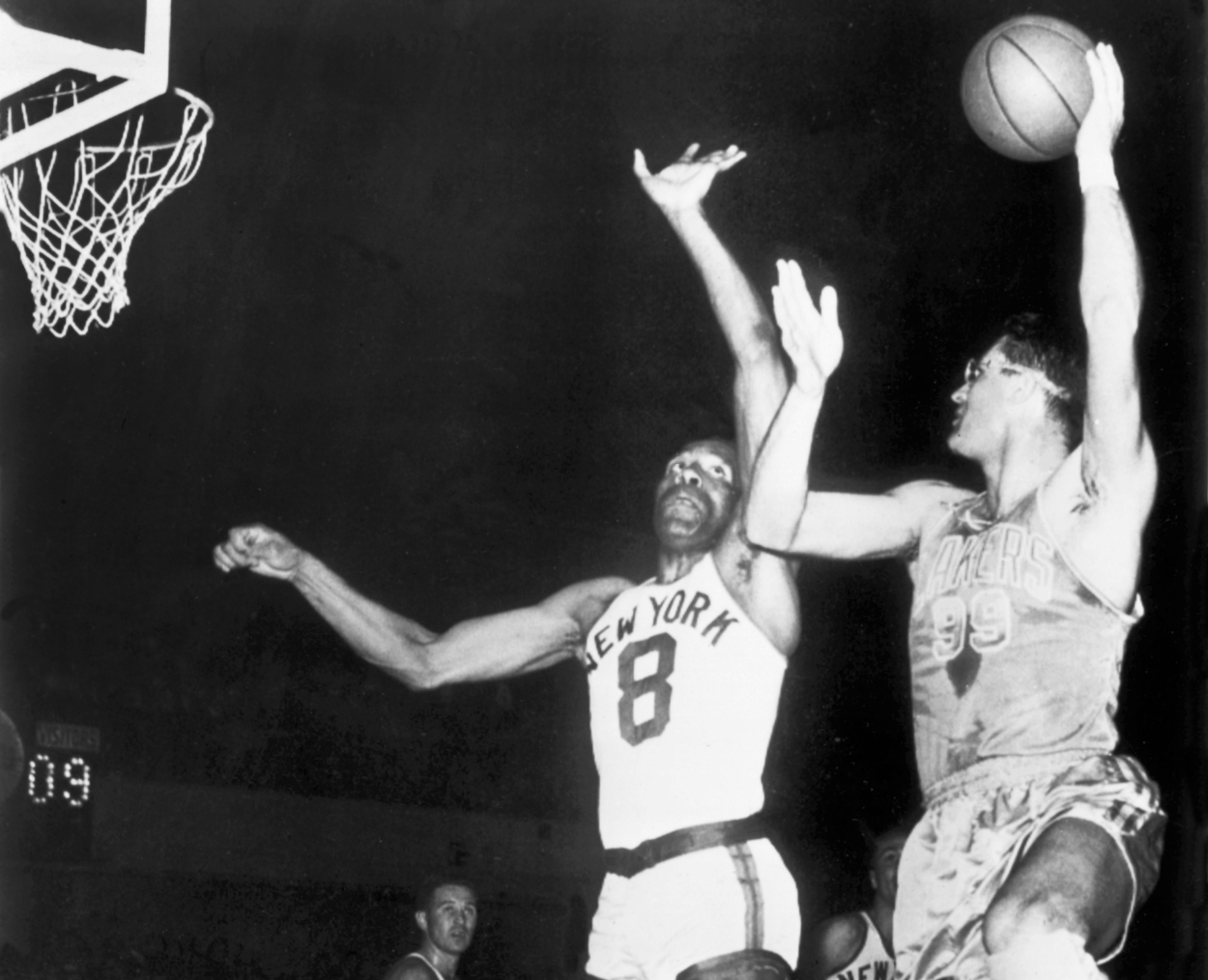NBA
History of NBA Playoffs Formats Best Defined as a Long, Strange Trip

A staple of the major sports primarily centered in the United States is a regular season, followed by playoffs. Those playoffs have evolved, and professional basketball is no exception. The NBA Playoffs currently include 16 of the league's 30 teams. But how did we get here?
As the NBA expanded, its playoff structure changed with those times. There haven’t been as many different formats as there have been seasons; it just feels that way when one starts to dig into its history.
Pro basketball championships before the NBA Playoffs were around
The National Basketball Association came about in 1949. Then the 12 members of the Basketball Association of America and the nine franchises in the National Basketball League discussed a merger. The BAA had quickly risen to dominate the pro basketball landscape in its three seasons, with larger cities, larger arenas, and more dollars.
The NBL had playoffs varying in size from two to eight teams during its run from 1937–49. But when seeding matchups between four-team groups, the NBL opted to go No. 1 vs. No. 3 and have the second- and fourth-place finishers square off. It was what the National Hockey League did in those days, so there was precedent. Incorrect mathematical precedent, mind you, but precedent just the same.
In its first two playoff brackets, the BAA broke the mold. There were two best-of-three quarterfinal series, in which the second-place teams from the East and West played, as did the third-place finishers from each division. The winners of those teams advanced to play each other in a best-of-three semifinal series. Yikes.
After the merger, the 1950 playoffs had 12 of the NBA's 17 teams involved. The top four finishers in three divisions qualified and played inside the division to determine which team advanced from each. Three clubs make for an awkward set of semifinals. One went directly to the NBA Finals, the other two played each other. Did they determine this by winning percentage? Of course not. It would rotate between the divisions each year. Fortunately, that format lasted just one year before the league began to contract.
After the dust settled, the NBA Playoffs evolved

By 1953–54, the NBA had diminished to nine teams, and the playoffs became a six-team affair. Beginning 1954–55, the second- and third-place teams in each division faced off. The winner played the division champion for a spot in the Finals. But that wasn’t before the NBA conducted a round-robin between the three top divisional finishers the previous season. When the Eastern Division champion New York Knicks lost all four games, the format changed. Not that being the wealthiest team in the biggest market had anything at all to do with that. Perish the thought.
The format established for 1955 continued through the 1965–66 season. The addition of the expansion Chicago Bulls brought the NBA back to 10 teams, and it opted to go back to an eight-team format (again with the 1-3, 2-4 pairings). As the league continued to expand, to 12 teams in 1967, 14 in 1968, and 17 in 1970, the eight-team format remained. It was tweaked when the Eastern and Western conferences grew to two divisions in each.
Starting in 1974–75, the top two finishers in each division advanced, along with the third-place team with the better record in each conference. Those teams were then seeded one through five, with the bottom two teams playing a best-of-three and the top seed playing the winner of that series. That did lead to one strange outcome in 1976. In the Western Conference's Midwest Division, the Milwaukee Bucks won it at 38–44. The Detroit Pistons were second at 36–46. The Los Angeles Lakers finished fourth in the Pacific Division with a 40–42 record and were left out because they finished behind the third-place Phoenix Suns (43–39).
The evolution of the modern playoffs
The NBA added four teams from the old American Basketball Association in 1976 and expanded the playoffs to 12 teams. Those NBA Playoffs almost had the seeding thing right. The two division winners were No. 1 and No. 2 and got first-round byes.
In 1983–84, the playoffs expanded to the current 16-team field. Rewarding division winners endured until the 2015–16 season when the decision was made to seed teams one through eight in each conference based on record. The latest wrinkle was the play-in experiment for 2020–21.
There have been populist efforts to seed the NBA Playoffs entirely based on team records, but the league has balked at that so far. It might sound good in theory, but a seven-game first-round series between Portland and Boston would be a travel nightmare.
Information courtesy of Basketball Reference.











